Range Booster

How much does a good quality signal booster cost ?
Signal boosters, also known as cell phone signal amplifiers or repeaters, are electronic devices designed to improve the strength and reliability of cellular signals in areas with poor coverage. The cost of a good quality signal booster can vary depending on several factors such as the type of technology used, the frequency bands supported, the coverage area, and the brand. The main types of signal boosters are analog and digital, with analog boosters generally being less expensive but not as clear or strong as digital boosters. The more bands a booster supports, the higher the cost is likely to be. Larger coverage areas require more powerful boosters, which tend to be more expensive. Well-known brands often charge a premium for their products due to their reputation, customer service, and warranty offerings. The cost of a good quality signal booster generally ranges from $200 to $1000 USD. Basic signal boosters suitable for small areas like a single room or vehicle typically cost between $200 and $300 USD. Mid-range signal boosters offer moderate coverage areas suitable for apartments or small offices and generally fall within the $300 to $600 USD price range. High-end signal boosters provide extensive coverage for larger homes, buildings, or outdoor spaces and typically cost between $600 and $1000 USD. When purchasing a signal booster, it's essential to consider installation costs if you plan to hire a professional, as well as any potential shipping fees if buying online. Additionally, look for products that come with a warranty or guarantee to protect your investment over time.

How do I choose the best signal booster for my needs ?
### How to Choose the Best Signal Booster for Your Needs When selecting a signal booster, consider factors such as your location, the type of signal you want to enhance, and the technology involved. Ensure compatibility with your network provider's frequency bands and your devices. Consider gain and range, legal requirements, installation and maintenance, budget, customer reviews, and brand reputation. Future-proof your choice by opting for upgradable systems.
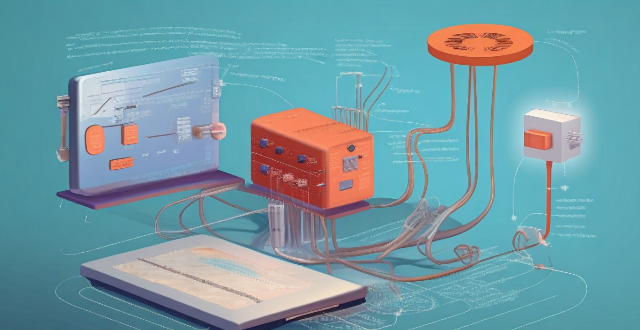
How do I install a signal booster in my building ?
Installing a signal booster in your building can improve mobile reception and internet connectivity. Identify problem areas, choose the right booster, determine antenna placement, run cables and connect boosters, test and adjust, and maintain and troubleshoot for optimal results.

Will a signal booster work with all types of devices ?
A signal booster is designed to improve the strength and reliability of wireless signals, such as cellular, Wi-Fi, or radio frequencies. However, whether a signal booster will work with all types of devices depends on several factors, including the compatibility of the booster with the device's technology and frequency bands. Compatibility: Cellular Networks: Signal boosters for cellular networks are typically designed to work with specific frequency bands used by different mobile operators. For example, a booster that supports 2G, 3G, and 4G LTE signals may not be compatible with 5G networks unless it explicitly states so. Therefore, it's essential to check the specifications of both your device and the booster to ensure they are compatible. Wi-Fi Networks: Wi-Fi signal boosters, also known as Wi-Fi extenders or repeaters, are designed to work with standard Wi-Fi protocols like 802.11b/g/n/ac/ax. Most modern devices support these standards, but older devices may not be compatible with newer protocols like 802.11ac or 802.11ax. Additionally, some boosters may only support single-band operation (2.4 GHz) while others offer dual-band (2.4 GHz and 5 GHz) support, which can affect compatibility with your device. Radio Frequencies: For other types of radio signals, such as walkie-talkies or CB radios, boosters must be designed to operate at the correct frequency. These boosters are often more specialized and less universal than those for cellular or Wi-Fi networks. It's crucial to match the booster's frequency range with the frequency your device uses. Installation and Placement: Even if a signal booster is technically compatible with your device, its effectiveness can be influenced by proper installation and placement. Here are some key considerations: Location of the Booster: The booster should be placed in an area where it can receive a strong signal from the source (e.g., a cell tower or router) and then amplify it for your device(s). Cable Quality and Length: If using a wired connection between the booster and your device or router, make sure to use high-quality cables that are not too long, as this can degrade signal quality. Interference: Avoid placing the booster near objects that can cause interference, such as microwaves or thick walls, as this can reduce its effectiveness. Conclusion: In summary, while signal boosters can potentially work with various types of devices, their effectiveness depends on multiple factors including compatibility with the device's technology and frequency bands, as well as proper installation and placement. Always check the specifications of both your device and the booster before purchasing to ensure they are compatible and follow the manufacturer's guidelines for installation.

What is a signal booster and how does it work ?
A signal booster is a device that improves wireless signals in areas with weak coverage by receiving, amplifying, and retransmitting signals. It consists of an external antenna for capturing signals, a signal amplifier for increasing their power, and an internal antenna for distributing the enhanced signals. Benefits include improved reception, extended battery life, reduced dropped calls, increased coverage area, and healthier device performance. Signal boosters are useful in rural areas, basements, high-rise buildings, and vehicles traveling through challenging environments.
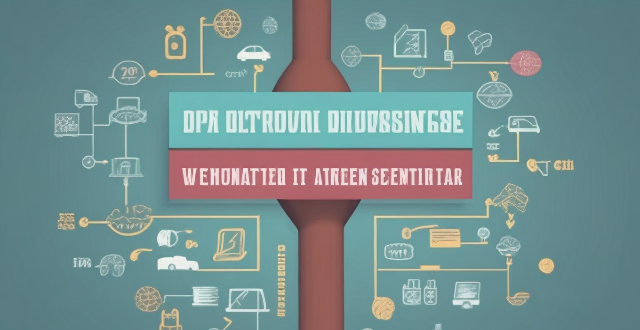
How often should I replace or update my signal booster ?
This topic summary discusses the importance of maintaining and updating a signal booster to ensure optimal performance. It outlines signs that indicate it's time to replace the booster, such as decreased performance or physical damage. The text also emphasizes the significance of regular firmware updates for improved functionality and security. Additionally, it provides a step-by-step guide on how to update the firmware and offers maintenance tips to prolong the booster's lifespan, including cleaning antennas, avoiding obstructions, and regular inspections. Overall, the summary stresses the need for periodic checks and updates to keep the signal booster functioning effectively.
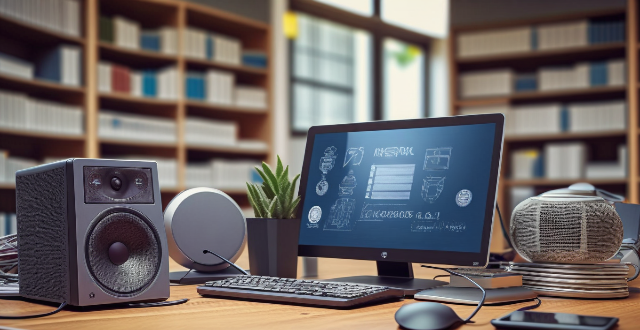
Is it safe to use a signal booster in my home or office ?
Signal boosters are devices that enhance cellular signals in areas where signal strength is weak. While they are commonly used in homes and offices to improve communication and connectivity, there are safety concerns associated with their use. These include potential increases in radiation exposure, interference with other electronic devices, and legal issues related to local regulations and carrier agreements. To use a signal booster safely, it is important to follow the manufacturer's instructions carefully, position the booster away from other electronic devices, research local regulations and carrier agreements, monitor performance regularly, and maintain the device properly. By taking these precautions, you can help ensure that your signal booster remains safe and effective over time.
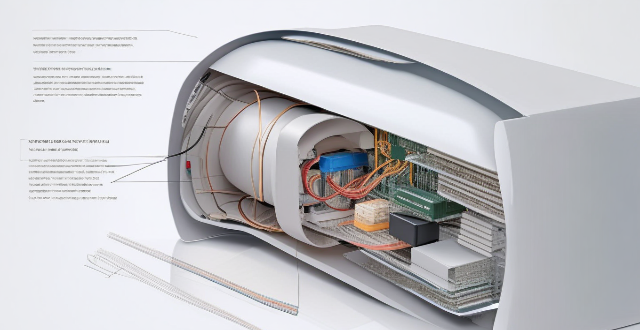
Are there any side effects of using a signal booster ?
Signal boosters can improve wireless connectivity but may cause side effects like overheating, interference with other devices, limited bandwidth, security concerns, and challenges from physical obstructions. It's important to consider these potential issues and take precautions to minimize them.

Can a signal booster be used outdoors ?
Signal boosters are versatile devices that can be used outdoors to enhance wireless signals like cellular, Wi-Fi, and GPS. While they offer significant advantages in improving connectivity in various outdoor scenarios, their effectiveness depends on factors such as environmental conditions and installation challenges. Proper planning and understanding of the specific needs and technical requirements are crucial for successful implementation.
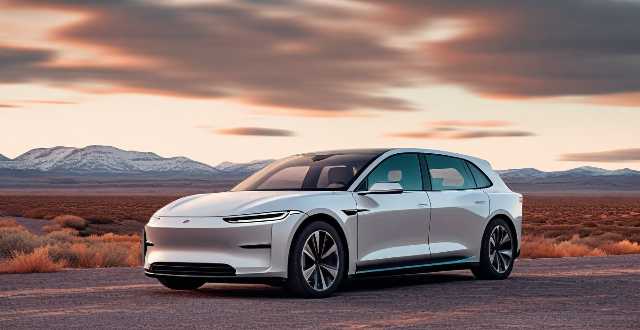
What is the range of an electric car ?
The range of an electric car, or the distance it can travel on a single charge, depends on factors such as battery size, driving conditions, and energy efficiency. Larger batteries generally provide longer ranges, but they also increase weight and cost. Driving at high speeds, in cold weather, or uphill can reduce range, while efficient powertrain systems use less energy for propulsion. The average range of electric cars is increasing over time, with many offering between 150-300 miles per charge under ideal conditions. Some high-end models boast even greater ranges, exceeding 400 miles on a single charge.

What is the range of a typical electric car ?
The range of an electric car refers to the distance it can travel on a full charge, which varies depending on factors such as battery size, energy efficiency, driving conditions, climate control, and tire pressure. Typical ranges for city driving are around 100-150 miles, while highway driving ranges are typically around 70-100 miles. For a mix of city and highway driving, most electric cars have a range of around 80-120 miles.

What is the range of a typical communication base station ?
The typical communication base station, also known as aThe typical communication base station, also known as a specific geographic area with wireless The range of a base station can vary based on the type of technology used, the height and location of the tower, and the surrounding environment. Different technologies have different range capabilities, with newer ones like 4G and 5G offering greater coverage and capacity than older technologies like 2G. Tower height and location also play a significant role in determining its range, with taller towers covering wider areas and being less affected by signal blockage. The surrounding environment, including urban or rural areas, can impact the range of a base station. The typical range of a base station can be from a few hundred meters to several kilometers, with practical ranges often being smaller due to interference and other factors. Network operators may use multiple base stations and other techniques to optimize coverage and capacity within their service areas.

What is the range of a parallel hybrid electric vehicle (PHEV) ?
The range of a parallel hybrid electric vehicle (PHEV) depends on several factors, including battery size, driving habits, road conditions, and fuel economy. Larger batteries provide longer ranges, while smaller batteries offer shorter ranges. Driving habits also play a significant role in determining the range of a PHEV. Road conditions can affect the efficiency of both the internal combustion engine and electric motor, leading to lower overall range. The combined range of a PHEV typically falls within the range of 300-600 miles, depending on the model and driving conditions.

What is the driving range of a Series Hybrid Electric Vehicle ?
The driving range of a Series Hybrid Electric Vehicle (SHEV) is influenced by factors such as battery pack size, electric motor efficiency, and vehicle weight. Most SHEVs have a combined driving range of around 30-50 miles per gallon equivalent (MPGe), but actual range may vary due to factors like driving conditions and use of accessories. Proper maintenance and consideration of these factors can help maximize the fuel efficiency and environmental benefits of a SHEV.

What kind of range can you expect from a Wi-Fi 6 router ?
Wi-Fi 6 routers offer faster speeds and better performance than previous standards. However, their range can be influenced by factors like physical obstacles, interference from other devices, router placement, channel selection, and device capabilities. With optimal conditions, a Wi-Fi 6 router can cover an area of about 1,500 square feet, but this varies based on the mentioned factors. To maximize its range, consider central placement, reducing interference, updating devices, and using quality hardware.

How can I improve my flexibility and range of motion during sports recovery ?
Improving Flexibility and Range of Motion during Sports Recovery: - Incorporate dynamic and static stretching routines before and after physical activities. - Use foam rolling for self-myofascial release to aid recovery and increase range of motion. - Include yoga or Pilates in your routine to improve flexibility and balance through mindful movements and breath control. - Maintain proper nutrition by staying hydrated, consuming adequate protein, and eating anti-inflammatory foods. - Ensure adequate rest through sleep and active rest days. - Practice consistency in these strategies and track progress to monitor improvements over time. - Consult with professionals like physical therapists and sports trainers for personalized guidance and injury prevention.

How can I improve my internet speed on public Wi-Fi ?
Improving internet speed on public Wi-Fi involves optimizing device settings, using online tools, and connecting to less congested networks. Tips include updating devices, turning off unnecessary apps, using a VPN, clearing browser cache, disabling extensions, using a lightweight browser, using a Wi-Fi booster or signal extender, avoiding peak times, choosing less popular networks, and testing speed with online tools like Speedtest and Google PageSpeed Insights.

What is the average distance an electric vehicle can travel before needing to recharge, and how does this affect infrastructure planning ?
The average travel distance of electric vehicles (EVs) has increased significantly due to advancements in battery technology, with most modern EVs offering ranges between 200-400 miles on a single charge. This improvement affects infrastructure planning for charging stations, which must consider urban and rural needs, highway fast charging, and residential and workplace solutions. Addressing range anxiety through ample charging options is crucial for wider EV adoption, and governments are implementing policies to facilitate this transition.

How can I fix a bad cell phone signal ?
How to Fix a Bad Cell Phone Signal A poor cell phone signal can be frustrating, especially when you need to make an important call or access the internet. Here are some tips on how to fix a bad cell phone signal: 1. Check Your Network Coverage - Check for network outages - Try another network 2. Identify and Remove Obstacles - Move to an open area - Remove objects blocking the signal 3. Restart Your Phone - Turn off your phone - Turn on your phone 4. Update Your Phone Software - Check for software updates - Clear cache and data 5. Use a Signal Booster or Antenna - Use a signal booster - Use an external antenna

Can you recommend a reliable shopping app with a wide range of products ?
The Amazon Shopping app is a reliable and comprehensive option for online shopping, offering a wide range of products, user-friendly interface, reliable shipping options, and excellent customer service. While there may be some drawbacks, such as the subscription fee for Prime membership, the overall benefits outweigh the cons.

How effective is the COVID-19 vaccine ?
The effectiveness of the COVID-19 vaccine varies depending on the type of vaccine and the population being vaccinated. mRNA vaccines have an efficacy rate of around 95% against hospitalization and death due to COVID-19, while adenovirus vector vaccines have an efficacy rate of around 66% and inactivated virus vaccines have an efficacy rate of around 70%. Older adults and people with underlying health conditions may require additional doses or booster shots to achieve optimal protection against severe cases of COVID-19. Populations with higher rates of transmission may also require additional doses or booster shots to achieve optimal protection against COVID-19.

What is the average cost of a cruise vacation ?
Cruise vacations offer a mix of relaxation and adventure, but the cost can vary. Factors like cruise length, destination, time of year, cabin type, onboard activities, alcohol, and gratuities affect the price. The average cost per person per day ranges from $50-$100 for budget lines, $150-$300 for mid-range, and $400-$1,000+ for luxury. Total costs for a 7-day cruise are $350-$700 for budget, $1,050-$2,100 for mid-range, and $2,800-$7,000+ for luxury. Tips for saving include booking early, traveling off-peak, choosing interior cabins, all-inclusive options, and looking for deals.

How long does immunity last after getting vaccinated against COVID-19 ?
Vaccines work by triggering an immune response that teaches the body how to fight off a virus. COVID-19 vaccines provide strong protection against severe illness and hospitalization, but it is still possible to contract the virus after being vaccinated. Immunity wanes over time, so booster shots are recommended to maintain protection. It is important to continue following safety measures such as wearing masks and social distancing to reduce the risk of infection.

How can I improve my cell phone signal ?
Improving your cell phone signal can be crucial for effective communication. Here are some tips to enhance your signal: check for obstructions, switch network settings, remove cases and covers, restart your phone, update firmware, use a signal booster, or contact your service provider for assistance.

Can vaccines protect against new virus variants ?
**Can Vaccines Protect Against New Virus Variants?** The ability of vaccines to protect against new virus variants depends on various factors, including the type of vaccine, the nature of the virus, and the rate of mutation. While some vaccines may provide cross-reactivity and adaptive immunity against multiple strains, others may require updates or booster shots to maintain protection against emerging variants. Public health measures such as masking, social distancing, and hand hygiene remain crucial in combination with vaccination efforts. Continuous global surveillance is essential for developing effective strategies to deal with new variants.
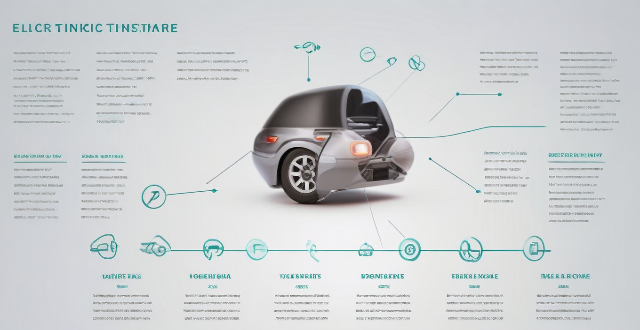
Can you recommend some affordable electric vehicles for first-time buyers ?
Affordable electric vehicles for first-time buyers include the Nissan Leaf, Chevrolet Bolt EV, Hyundai Kona Electric, and Kia Niro EV. These vehicles offer good value for their price range with features like rearview cameras, touchscreen infotainment systems, and advanced safety features. It's important to consider factors like range, charging time, and available incentives when choosing an electric vehicle.

How do I boost my cell phone signal strength ?
Having a strong cell phone signal is crucial for making calls, sending messages, and using mobile data. If you're experiencing poor signal strength, there are several ways to improve it. Here are some tips on how to boost your cell phone signal strength: 1. Check for Obstructions: Objects like buildings, walls, and trees can block or weaken signals. Try moving to an area with fewer obstructions. 2. Use 2G Instead of 3G/4G: If you're having trouble with 3G or 4G, switch to 2G. While slower, 2G networks are more widespread and often provide better coverage in remote areas. 3. Keep Your Phone's Software Up to Date: Manufacturers often release updates that can improve signal strength. 4. Use a Signal Booster: These devices work by capturing an outside signal, amplifying it, and rebroadcasting it inside your home or office. They can significantly improve signal strength in areas with weak coverage. 5. Contact Your Service Provider: If none of the above solutions work, contact your service provider and report the issue. They may be able to identify a problem with their network or offer additional solutions.

What is the ideal cadence (steps per minute) for efficient running ?
The ideal cadence for efficient running varies based on individual factors but generally falls within a range of 160 to 180 steps per minute. A higher cadence can reduce impact forces, improve running economy, and enhance coordination. Beginners may start with a lower cadence and gradually increase it, while experienced runners may experiment within the recommended range. Measuring cadence involves timing a chosen distance and counting steps, then calculating steps per minute. Tips for increasing cadence include shortening stride length, focusing on quick feet, using a metronome app, and practicing on a treadmill.
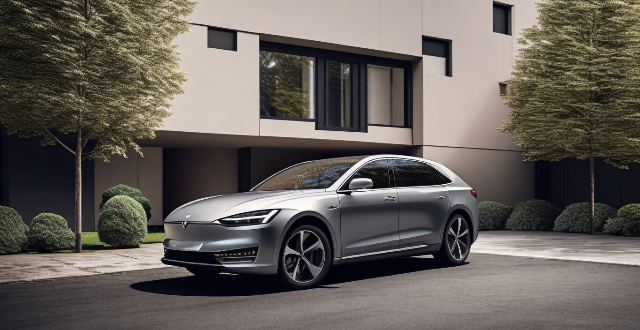
Can you drive a hybrid car in electric mode only ?
Hybrid cars offer the fuel efficiency of electric vehicles and the range of gasoline-powered cars. Some hybrids can drive in electric mode under certain conditions, such as battery charge level and speed. Advantages include reduced emissions and a quieter driving experience, but there are also drawbacks like limited range and slower acceleration. Examples include the Toyota Prius and Honda Insight.